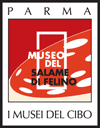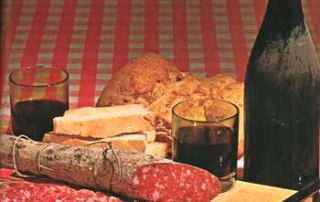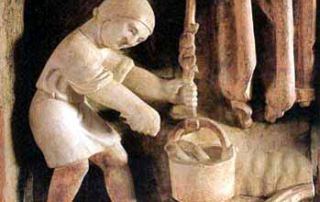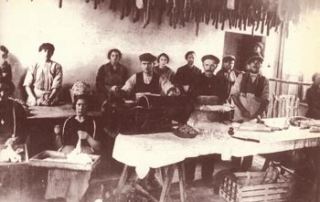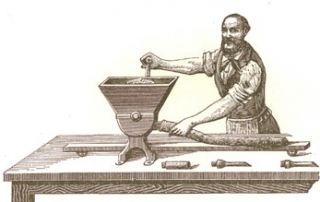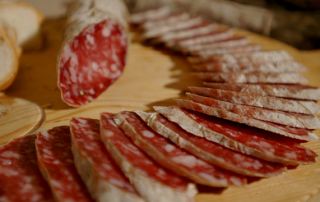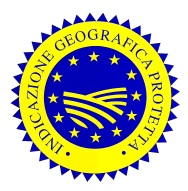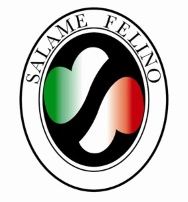The process of making Felino Salami
The extremely tasty Felino Salami can boast Etruscan antecedents: this can be seen in the name itself of the fortunate village in the province of Parma where, quite possibly, the best of the Italian cured pork meat products is made.
Felino, which was once “Felsinum” was a colony founded by the same Etruscans who imposed the name of “Felsina” on Bologna.
In Felino, situated in the foothills of the verdant Baganza river valley rich in woods where in ancient times herds of pigs roamed and grazed, since time immemorable the habit of preparing a ‘salame’ with pure pork meat alongside that of cured Parma ham has been widespread; the word comes from the Latin root “als”, salt, linguistically transformed in “sal”.
The relationship with the ancient art of meat curing distinguishes Felino from all the other villages in the low Apennine hills; in fact, since the middle ages it has been recognised as the gastronomic fatherland of the famous Felino salami and was represented in the XII century inside the Baptistery of Parma in the renowned low relief sculpture by Benedetto Antelami of the zodiac sign of Aquarius.
This speciality, handed down to us from ancient country traditions, is the fruit of the knowledgeable union between the best pork meat and the particular microclimate of the area which favours the maturing process of the salami combining an ideal temperature with a correct level of humidity and ventilation.
It is the bringing together of these essential factors which has enabled the Felino salami to be recognised as an authentic masterpiece of the Italian art of curing pork meat with its inimitable organoleptic and gastronomic characteristics.
The base mixture is made of carefully selected fresh meat; de-boned shoulder of ham, bacon and chosen minced meat, excellent quality off-cuts from ham preparation, both lean and fat, all of which is mixed up with salt, spices and natural herbs and then fatter parts chosen for their harder consistency are added in the proportion of 25-30%.
After grinding up into a coarse-cut mix, salt and peppercorns are added together with white wine and herbs. The salami is then hand stuffed into pig-gut, which gives it the characteristic shape, and then slowly aged and matured. The end product is typically, soft, sweet tasting and with a delicate aroma.
Cooked and eaten – just like the salami from Ferrara is today – in pre-Roman and Roman times and for the whole of the medieval and renaissance period; Antelami represents it in a cauldron, the cook of the Farnese court, Carlo Nascia, places it in two banquests. Only from the second half of the XVIII century is the salami shown in a still-life by the Neapolitan painter Giacomo Nani (1701-1770) as a food to be sliced thinly and served without cooking.
Tradition requires that the salami is sliced with a knife held at an angle of 60° in order to show the grain of the product and to avoid the slice crumbling if it is fresh cut.
Currently Felino salami is being examined in order to obtain the IGP certification, Indication of Protected Geographical origin, from the European Union.
Ancient working of Felino Salami
picture taken from the Archives of Salami Museum


